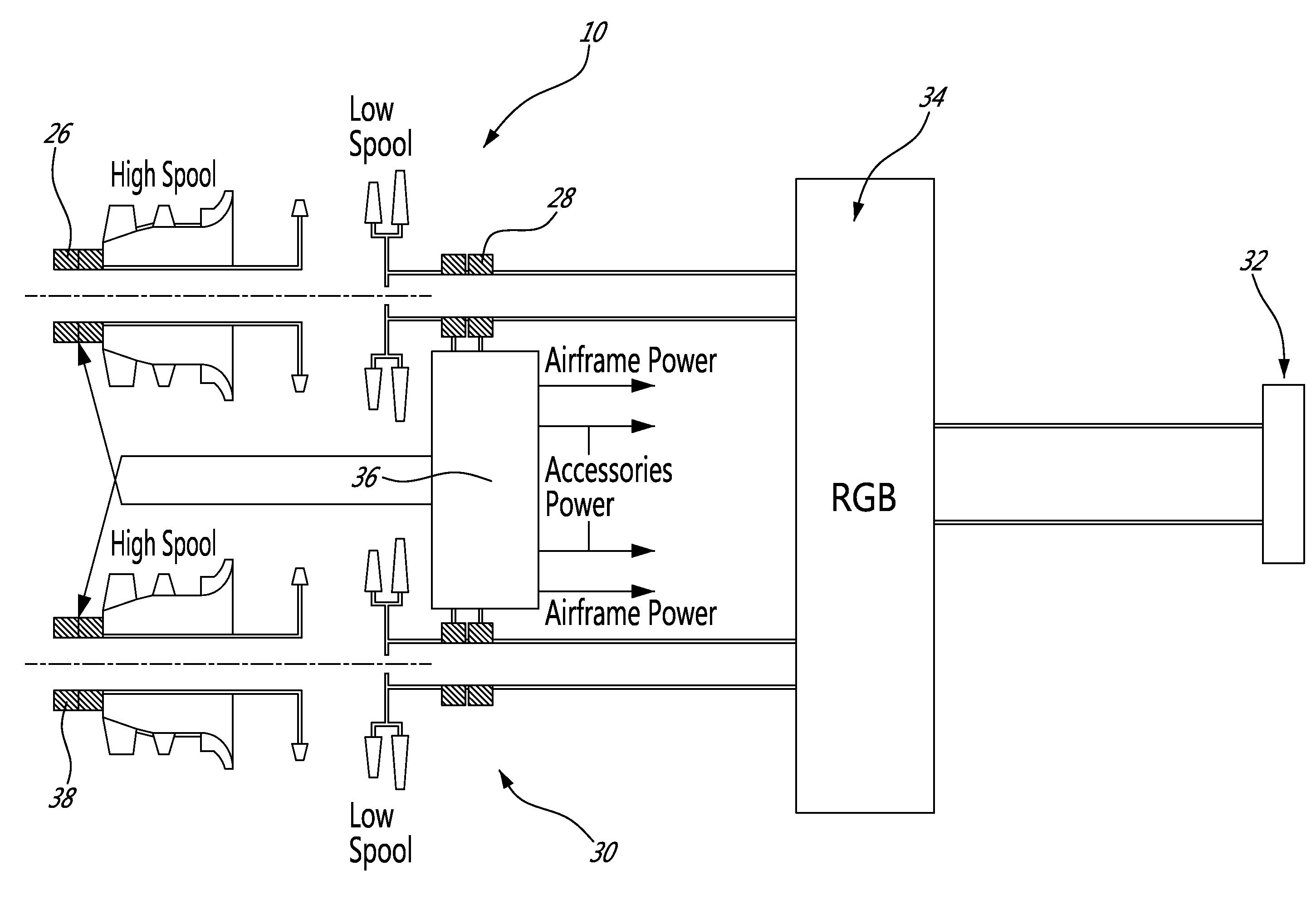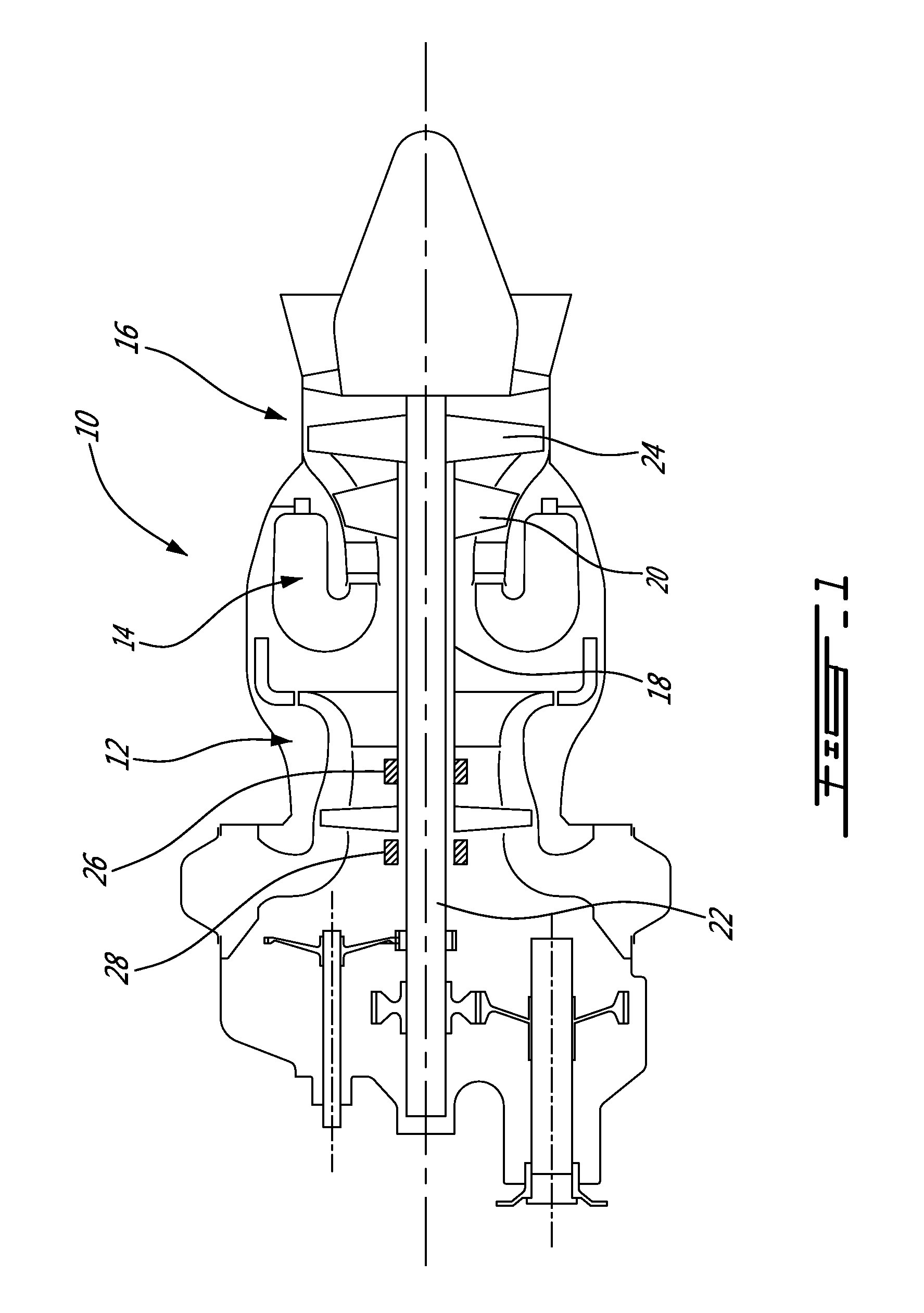Multiple turboshaft engine control method and system for helicopters
a multi-turboshaft engine and control method technology, applied in engine control, turbine/propulsion fuel control, jet propulsion plants, etc., can solve the problems of limited fuel efficiency gain, significant delay in starting up the engine back up,
- Summary
- Abstract
- Description
- Claims
- Application Information
AI Technical Summary
Benefits of technology
Problems solved by technology
Method used
Image
Examples
Embodiment Construction
[0012]FIG. 1 illustrates an example of a turbine engine. In this example, the turbine engine 10 is a turboshaft engine generally comprising in serial flow communication, a multistage compressor 12 for pressurizing the air, a combustor 14 in which the compressed air is mixed with fuel and ignited for generating an annular stream of hot combustion gases, and a turbine section 16 for extracting energy from the combustion gases.
[0013]The turbine engine 10 in this example can be seen to include a high pressure spool 18, including a multistage compressor 12 and a high-pressure turbine stage 20, and a low pressure spool 22, including a low-pressure turbine stage 24. The low spool 22 leads to a power shaft via a gear arrangement. The high spool 18 can be refer to herein as a compressor spool, given that it contains at least one compressor stage, and the low spool 22 can be reffered to herein as the power spool.
[0014]In this example, the turbine engine 10 is of the more-electric engine type ...
PUM
 Login to View More
Login to View More Abstract
Description
Claims
Application Information
 Login to View More
Login to View More - R&D
- Intellectual Property
- Life Sciences
- Materials
- Tech Scout
- Unparalleled Data Quality
- Higher Quality Content
- 60% Fewer Hallucinations
Browse by: Latest US Patents, China's latest patents, Technical Efficacy Thesaurus, Application Domain, Technology Topic, Popular Technical Reports.
© 2025 PatSnap. All rights reserved.Legal|Privacy policy|Modern Slavery Act Transparency Statement|Sitemap|About US| Contact US: help@patsnap.com



